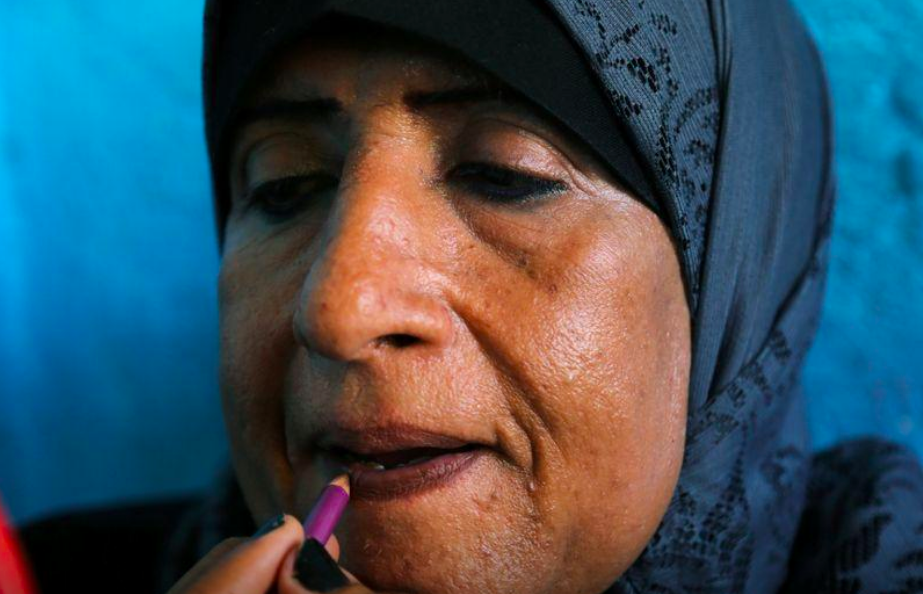
With recent discussions about psychological disorders, intersex and deviant behavior, Egyptians are not aware of the phenomenon of so-called sex reassignment surgery or Gender Identity Disorder (GID), the distress a person experiences with the gender they were born with.
There are those who accuse people experiencing these phenomena of simply being “perverts,” but the situation is in fact completely different. While the “pervert” does not resort to sex change operations, those who do are people born with an imbalance due to a hormonal disorder in the brain which afflicts the child before birth. With regards to intersex persons, these children are born with clear congenital defects, in which there is a reconciliation between the mind and the body, which makes an operation easy to perform.
Doctors assert that GID persons have the right to undergo transgender operations but the government refuses to legalize them. The phenomenon is also surrounded by social stigma and Egypt’s al-Azhar, the Sunni Muslim world’s most prominent religious institution, does not grant approval for patients to undergo these operations.
In a series of forthcoming articles published over separate days, Al-Masry Al-Youm, the sister Arabic-language publication of Egypt Independent, opens up the gender identity disorder subject to delve deep into the psychological suffering transponders usually go through, social rejection, medical perspective and Islam’s stance on gender identity.
Transgender surgical procedures around the world
31 people have applied to the Egyptian Medical Syndicate to undergo the GID procedure from 2013 to 2017. Egyptian Medical Syndicate approved just 20 of those cases. The prevalence rate of GID for males is 1 to 30,000 while it is 1 to 100,000 for females.
The disorder prevalent in children is 4-5 boys for every girl.
Iran is the second in the world where sexual transformation procedures are done.
According to a 2016 report by Human Rights Watch (HRW), transgender issue has in recent years made enormous strides around the world towards obtaining legal recognition. In Argentina, the foundation stone was laid in 2012 for a law recognizing gender change. There law stipulated that whoever is older than the age of 18 can choose his sex, and change his gender and social status and amend his official documents without any prior judicial or medical approval.
Over the past three years, four countries – Colombia, Denmark, Ireland and Malta – have removed significant barriers to the legal recognition of sexual identity, distinguishing them from states that either do not permit a person to change his/her gender identity, or allow them after meeting certain conditions, that include surgery, compulsory sterilization, psychological assessments, long waiting periods and divorce. HRW said that for the first time people can change the reference to their sex on their documents simply by filling in the appropriate forms.
In Ireland, the Gender Recognition Act of 2015 was the product of a 22-year-old legal battle by Lydia Annice Foy, a retired dentist. The success was only achieved in 2015 after a gay marriage referendum was overwhelmingly successful, which made the government legally recognize genders based on identity.
In South Asia—where hijras, an identity category for people assigned male at birth who develop a feminine gender identity, have long been recognized culturally, if not legally —activists have pursued a related aim: the formal recognition of a third gender. Hijras’ traditional status, which included bestowing blessings at weddings, had provided some protection and a veneer of respect. However, rather than being viewed as equal to others before the law, they were regarded as exotic and marginal — an existence dictated by boundaries and limitations, not rights.
Nepal’s Supreme Court, in a sweeping 2007 ruling, ordered the government to recognize a third gender category based on an individual’s “self-feeling.” The ruling rested largely on the freshly minted Yogyakarta Principles—the first document to codify international principles on sexual orientation, gender identity, and human rights. Armed with the ruling, activists successfully advocated with government agencies to include the third gender category on voter rolls (2010), the federal census (2011), citizenship documents (2013), and passports (2015).
Similarly, in 2009, the Supreme Court in Pakistan called for a third gender category to be recognized, and in Bangladesh, the cabinet issued a 2013 decree recognizing hijras as their own legal gender. In 2014, India’s Supreme Court issued an expansive judgment recognizing a third gender, affirming “the right of every person to choose their gender,” and calls for transgender people’s inclusion in state welfare programs.
India has also become a new destination for people seeking sex change procedures. The figures are still modest but they are growing continuously. The surgical procedure costs less in this country than in other countries, according to experts in this field. Those who want the sex change procedure prefer India, which is not tolerant with her native transgenderers, to Thailand which is a key destination for this type of operations and is more open.
More than 250,000 patients, seeking sex change and related procedures, are travelling to India annually. This figure is modest compared to Thailand, which annually attracts 2 million foreigners to receive treatment on its territory, especially for sex change operations.
These operations are carried out by about 10 surgeons in New Delhi and Bombay in particular,despite discrimination against millions of transgender people in India. They live on the margins of society and have to beg or practice prostitution.
Iran is now in second place after Thailand in performing sex-change operations. Over the years, sex change in Iran has become fairly common.
The government has supported this and has paid half of the costs of the operation, providing a center for the rehabilitation and reintegration of transgender people and issuing their official papers easily. But it was not so simple until the situation changed after the campaigner for the rights of transgender people Maryam Molkara convinced Ayatollah Khomeini with her case after visiting him in 1987.
That year, he issued a fatwa permitting sex change. Khomeini said: “If someone wants to change his current gender because he feels that he is stuck inside a body other than his body, he is entitled to get rid of this body and convert to another sex.”
According to Mahtaa – an Iranian online media voice of transgender people – Iranian society has difficulty in accepting transgender people, but it is better than ever before, especially for those who change their sex from female to male. The culture of Iranian society is similar to the societies of the Middle East, which consider men to be “unblemished”. But for those who change their sex from male to female, it is still complicated, as they face the rejection of society, which sees the female in the “ lower” rank.




